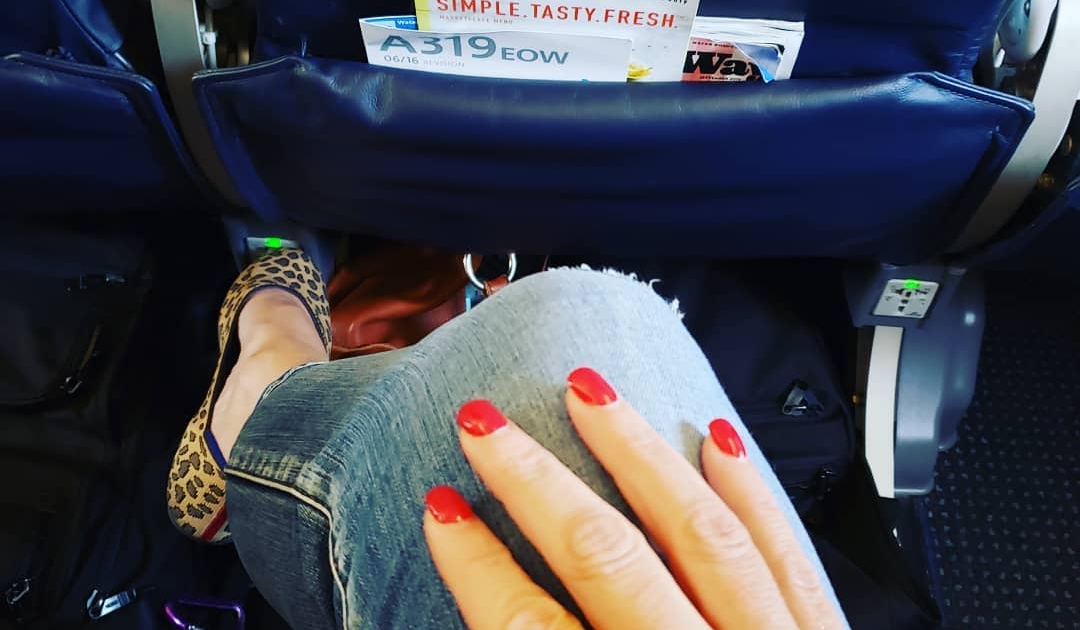Being Mobile
By Kourtney Govro, VP Business Development
Over the past six months, my travel schedule has increased significantly creating many opportunities for strange and frustrating travel experiences. Attempting to take it all in stride, I began writing a mini-blog on Facebook describing the adventures and mishaps. To avoid posting multiple selfies, I take pictures of my knees sitting in a train, plane, or automobile seat – I named it the “Skinny Knee Chronicles”.
The constant (other than my fantastic knees) is the necessity of my smart phone while travelling. I have an app for American Airlines, Amtrak, Uber, and Marriott that I use every single time I travel….except for the one and only time I flew Southwest which included the dreaded garlic-eating seat mate issue….alas, I digress….the other app I enjoy is Tripit and Outlook which consolidate all my travel info together in one spot. Digitizing my beloved Travel Folder that my wonderful admin, Karla, used to prepare for me.
If flights are cancelled or delayed, American will send me a push notification and I can click through to change my flight. When this happens, I can cancel and rebook rooms on Marriott’s BonVoy app. What’s your favorite travel app?
All of this is written to illustrate how mobile we are; and not just a little mobile, a lot mobile.
In contrast, I find it fascinating how non-mobile our hospital environments are today. They are tethered to computers and wall-mounted screens, even in the patient room. How many times do you actually look at the screen in the airport to figure out your gate? Let’s be honest, if you do, you become a roadblock for those of us who check the app.
Progress is inhibited by making workflow occur at a wall in a hospital. In 2019, are you really pencil whipping a chart to document that you rounded? Do you have to push a button on the wall to activate a workflow? If I can book a flight, hotel room, train, random Uber driver, and order food on my phone – why are hospital staff still walking to a wall to do anything?
We understand that the mobile communications planning process can be overwhelming for a hospital. After the transition to EMR, the next essential step in the journey is to transition to a true mobile environment. It’s more than just sending an alarm to a wireless phone; that’s not mobility, that’s just moving a beep from a desk to a hip.
A true mobile strategy includes evaluating what parts of a care team’s Communication, Documentation, Notification, and Information need to transfer from a computer, piece of paper, post-it note, or face-to-face interaction to a mobile device. As I work with hospitals across the country, we are creating templates that support their Clinical, Informatics and IT teams to help design a strategy for today and a transition plan for tomorrow.
Kourtney Govro, VP of Business Development & Managing Director of the Sphere3® Clinical Advisory Division
Kourtney Govro is the CEO and Founder of Sphere3®, a patient experience management software company that was recently acquired by Critical Alert. She now serves as the Vice President of Business development. She is the industry leading expert in patient communication and caregiver interaction analytics. She is a thought leader, speaker, blogger, and has research published in the Journal of Clinical Nursing Studies. Kourtney has two published patents in the patient experience and analytics space that assess patient behaviors and patient feedback to better prioritize engagement. Sphere3® has been recognized nationally as a Gartner Cool Vendor, Fierce IT as an Analytics award winner with local awards from several organizations.
Kourtney has been awarded the WiSTEMM Enterprising Innovator Award, Kansas City Women Who Mean Business Award, Ingrams 30 under 30, and other business leadership awards. She has served American Heart Association as Go Red Chair, Board Member of Restoration House of Kansas City, and in other public service capacities in the Kansas City area.
Kourtney and her husband David have four boys and are active members of their church community.


